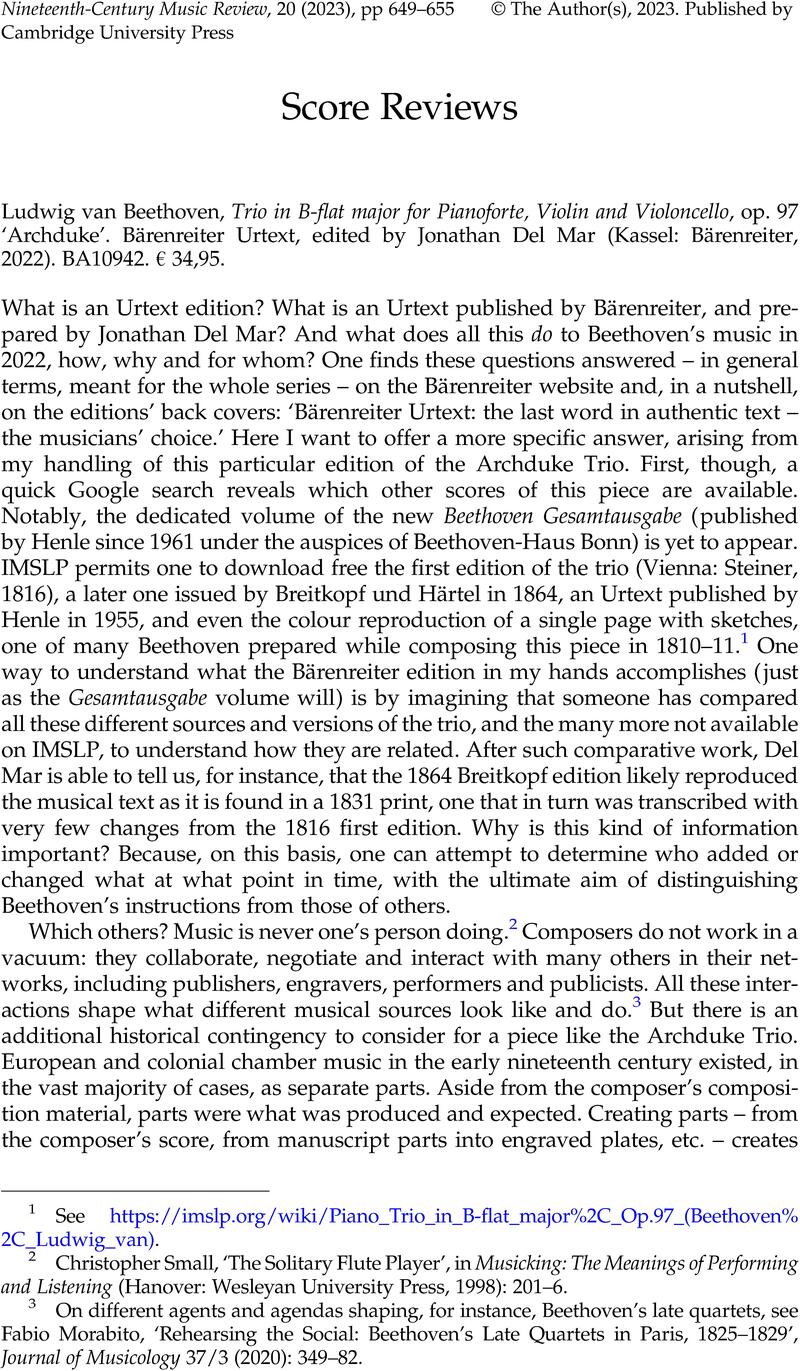No CrossRef data available.
Published online by Cambridge University Press: 30 March 2023

2 Small, Christopher, ‘The Solitary Flute Player’, in Musicking: The Meanings of Performing and Listening (Hanover: Wesleyan University Press, 1998): 201–6Google Scholar.
3 On different agents and agendas shaping, for instance, Beethoven's late quartets, see Morabito, Fabio, ‘Rehearsing the Social: Beethoven's Late Quartets in Paris, 1825–1829’, Journal of Musicology 37/3 (2020): 349–82CrossRefGoogle Scholar.
4 Julia Ronge, ‘Preface’, in Ludwig van Beethoven, Piano Trio in B flat major, op. 97, Facsimile of the autograph score, HN 3230 (Munich: Henle, 2020): xvii n. 13.
5 Other Bärenreiter editors linger more on these layers, for instance as an opportunity to discuss matters of historical performance practice. See the 2020 Urtext of Beethoven's Violin Sonatas edited by Clive Brown (BA 9063), reviewed by Nancy November in this journal 18/3 (2021): 611–13.
6 Ludwig van Beethoven, Piano Trio Opp. 1 & 97 Trio Metamorphosi, Decca Italy B07J34LYBD, 2019, compared here with Beethoven, The ‘Archduke Trio’ Daniel Barenboim, Pinchas Zukerman, Jacqueline du Pré, Emi Records ASD 2572, 1970.
7 See time index 11.20 in the presentation video of the ‘Bärenreiter Urtext’, https://youtu.be/yzzosvTN27U?t=680 (accessed 28 January 2023).
8 Ronge, ‘Preface’.